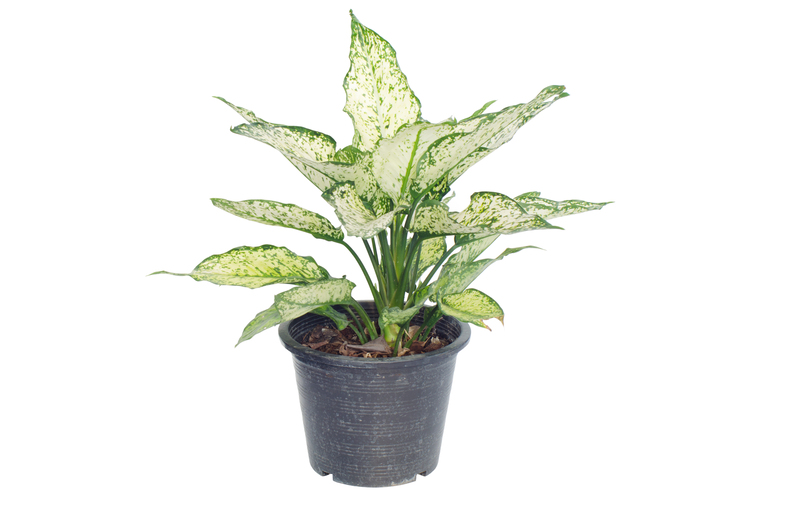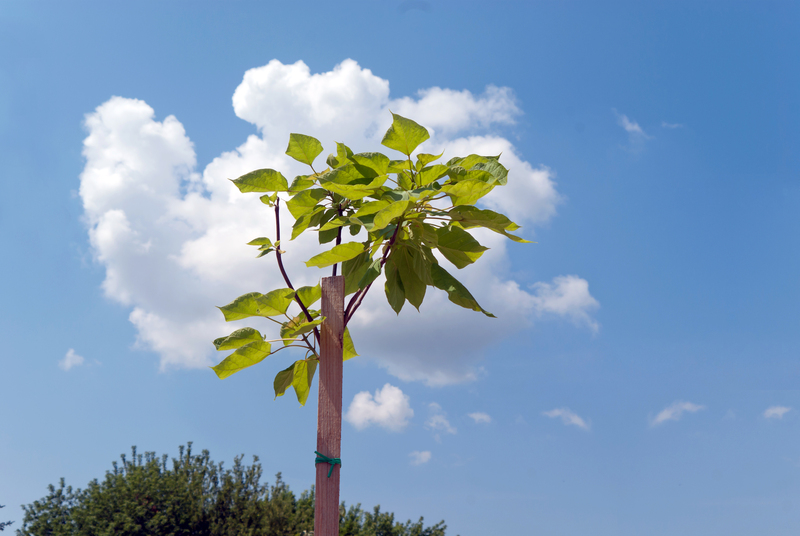Expert Advice on the Best Approaches to Removing Tree Stumps
Tree stumps may appear rustic or add a hint of natural charm to your yard, but in most cases, they are a nuisance, a tripping hazard, and even an invitation to pests. Effective stump removal is crucial for maintaining the beauty, safety, and functionality of your outdoor space. In this comprehensive guide, we'll walk you through the best approaches to removing tree stumps, highlighting expert tips, safety considerations, and solutions for both DIY enthusiasts and those who prefer to hire professionals.
Why Is It Important To Remove Tree Stumps?
Before diving into the various tree stump removal methods, it's vital to understand why removing stumps is a necessary step in responsible landscape management. Some key reasons include:
- Preventing Pest Infestations: Decaying stumps attract termites, ants, and other wood-boring insects which can migrate to healthy plants or even your home.
- Eliminating Safety Hazards: Exposed stumps can cause injuries to children, visitors, or even damage lawn equipment.
- Enhancing Aesthetic Appeal: A yard clear of unsightly stumps looks neater and more inviting.
- Making Space for Replanting or Construction: Stump-free land is more versatile for future landscaping projects or new construction.
- Preventing Regrowth: Some tree species may sprout new shoots from a remaining stump, defeating the purpose of tree removal.

Understanding Different Approaches to Tree Stump Removal
There are multiple techniques for removing stumps, each with its own advantages and suitability depending on the specific scenario. Here, we'll review the most common and effective stump removal methods as recommended by tree care experts.
1. Manual Stump Removal
Manual removal is the go-to method for those confident in their physical strength, looking to save on professional costs, and dealing with smaller stumps. Here's how to approach manual extraction:
- Tools Needed: Shovel, mattock, digging bar, axe, handsaw, or chainsaw (for larger roots).
-
Step-by-Step:
- Clear away rocks and debris from around the stump base.
- Use a shovel and mattock to loosen and expose roots.
- Sever the main roots using an axe, saw, or chainsaw.
- Rock the stump from different sides to loosen it; you may need to continue digging and cutting roots.
- Once free, pull out the stump and fill the depression with soil.
Expert tip: This approach works best for recently felled trees with small to medium stumps. Stubborn or deeply-rooted stumps may require mechanical assistance or professional intervention.
2. Stump Grinding
Stump grinding is one of the most popular and efficient techniques for stump removal, especially for large, tough stumps. Professional-grade stump grinders are powerful machines designed to chip away the stump down to below the soil level.
- Process: A grinder with a fast-rotating cutting disk reduces the stump and surrounding roots into small wood chips.
- Advantages: Quick, thorough, and leaves the site ready for replanting or landscaping.
- Limitations: Doesn't remove all roots (though the majority are ground), can be expensive if hiring a pro, and machines are heavy and require skillful operation.
- Safety: Stump grinders are dangerous; proper safety gear and experience are essential. It's generally advised to hire a certified arborist or tree service.
Expert tip: If you rent a stump grinder for DIY use, always wear protective gear (eye and ear protection, gloves, sturdy footwear) and follow the manufacturer's instructions precisely.
3. Chemical Stump Removal
If you're not in a hurry and wish to avoid heavy labor, chemical stump removal is a viable solution. Commercial stump removers (often potassium nitrate-based) are available at most garden centers.
- How It Works: The chemical accelerates decomposition, softening the wood over several weeks or months.
-
General Steps:
- Drill deep holes evenly across the stump's surface.
- Fill the holes with chemical stump remover as per instructions.
- Moisten the area and cover it with a tarp (optional, helps retain moisture).
- As the stump decays, break up spongy wood and remove remnants.
- Environmental Note: Always follow product safety guidelines. Chemicals can be hazardous to pets, children, or beneficial soil organisms.
Expert tip: For faster results, apply the chemical during warm, wet seasons. Avoid overuse, which can damage surrounding soil or vegetation.
4. Burning the Stump
In some rural or remote areas where permitted by local regulations, burning a tree stump is a classic removal method. It's most effective when combined with chemical softening or after several months of drying.
- Preparation: Drill deep holes, fill with kerosene or stump remover, and let soak for several days.
- Ignition: Light the stump under careful supervision. Allow it to smolder until mostly consumed.
- Precautions: Always check local fire ordinances; keep water or a fire extinguisher nearby; never leave a fire unattended.
- Cleanup: Remove ash and remaining roots; fill in the hole with soil.
Expert tip: Burning is rarely recommended for urban or suburban yards due to fire risks and possible environmental damage.
5. Natural Decomposition
If you're not in a rush and prefer an eco-friendly approach, encourage the natural decomposition of the stump. This may take several years, but it enriches your soil and avoids chemicals or heavy machinery.
- How To Speed It Up: Keep the stump moist, add nitrogen-rich fertilizer, or cover with organic materials like compost or mulch.
- Advantage: No damage to surrounding plants or soil.
- Disadvantage: Slowest method; stump remains visible for a long period.
Expert tip: To disguise the stump during decomposition, consider creating a decorative flower planter or a habitat for beneficial insects.
Professional vs. DIY Stump Removal: Which Is Right for You?
Deciding between DIY versus professional stump removal depends on several factors:
- Size and Quantity: Professionals are best for large, old, or multiple stumps while small stumps can often be handled DIY.
- Equipment Needed: Stump grinders and heavy machinery are costly to rent for one-time jobs; pros come equipped for the task.
- Physical Effort: Manual removal is grueling--consider your health and help available.
- Timeframe: Professionals are faster and safer; DIY options may take longer, especially chemical or natural methods.
- Budget: DIY can be budget-friendly, but mistakes may lead to higher eventual costs.
When to Call the Professionals
Some scenarios almost always necessitate hiring a tree stump removal service:
- Massive or deeply rooted stumps
- Proximity to utilities (water, gas, power lines)
- Limited accessibility (tight spots, steep slopes)
- Sensitivity to landscaping or nearby structures
- Need for thorough cleanup and site preparation
Professional arborists also offer expertise in avoiding property damage, comply with local regulations, and provide disposal of debris.
Important Safety Considerations in Tree Stump Removal
Regardless of technique, safety should always be a priority when removing stumps. Keep these key tips in mind:
- Wear safety goggles, gloves, steel-toed boots, and hearing protection as appropriate
- Contact local authorities or utility companies before digging
- Check for wildlife or insect nests inside old stumps
- Follow all equipment and chemical manufacturers' instructions
- Keep children and pets at a safe distance during removal
- Be mindful of weather conditions--wet ground is easier for manual removal but can complicate machine operation
Disposal and Aftercare: What to Do with Stump Remains
Removing the stump is just half the battle. Consider the following options for wood chips, roots, or debris:
- Composting: Wood chips from grinding are carbon-rich and ideal for compost piles.
- Mulching: Spread chips around flower beds or garden paths to retain moisture and suppress weeds.
- Haul-away: Many professional services include debris removal, disposing at a landfill or recycling center.
- Fill the Hole: Backfill the stump cavity with topsoil, then seed with grass or plant ground cover for a seamless finish.
Expert tip: Monitor the area for sinkholes or new shoots, especially after grinding or manual removal.

Frequently Asked Questions About Tree Stump Removal
How long does it take to remove a tree stump?
The time required depends on the method. Manual removal can take a few hours for small stumps, while chemical decomposition may span several weeks to months. Professional grinding usually takes less than an hour.
Is it better to remove tree stumps or grind them?
Grinding a stump is generally faster and less invasive than full removal. However, complete removal is necessary when preparing land for construction or preventing regrowth. Consider your landscape goals before deciding.
Can I use household items to rot a tree stump?
Common household items like rock salt or Epsom salts can help draw moisture from the stump and hasten decay--but they are less effective and may harm soil health if overused. Specialized stump removal products are generally safer and more reliable.
Are chemical stump removers safe?
Most commercial removers are safe if used as directed. Avoid contact with skin, eyes, and avoid runoff into gardens or waterways. Choose environmentally friendly brands whenever possible.
Wrapping Up: Choosing the Best Tree Stump Removal Method for Your Yard
There is no one-size-fits-all solution when it comes to removing tree stumps. Your ideal approach depends on factors such as stump size, budget, desired speed, and tolerance for physical labor. Here's a quick recap of your options:
- Manual removal: Best for small stumps and fit individuals seeking a DIY challenge.
- Stump grinding: The quickest and most efficient tool for large or multiple stumps--usually best left to professionals.
- Chemical removal: Low-labor but slow--good for patient homeowners unconcerned with immediate results.
- Burning: Traditional but risky--ensure compliance with local regulations and environmental safeguards.
- Natural decomposition: Eco-friendly and easy, but the slowest way to get rid of stumps.
No matter which method you choose, always prioritize safety, environmental responsibility, and long-term landscape health. Removing an old tree stump can transform your yard by restoring beauty, safety, and new potential for gardens, lawns, or hardscaping.
If you're ever in doubt, don't hesitate to consult with a certified arborist or lawn care expert. Their expertise ensures your stump removal goes smoothly and your outdoor space remains vibrant for years to come.